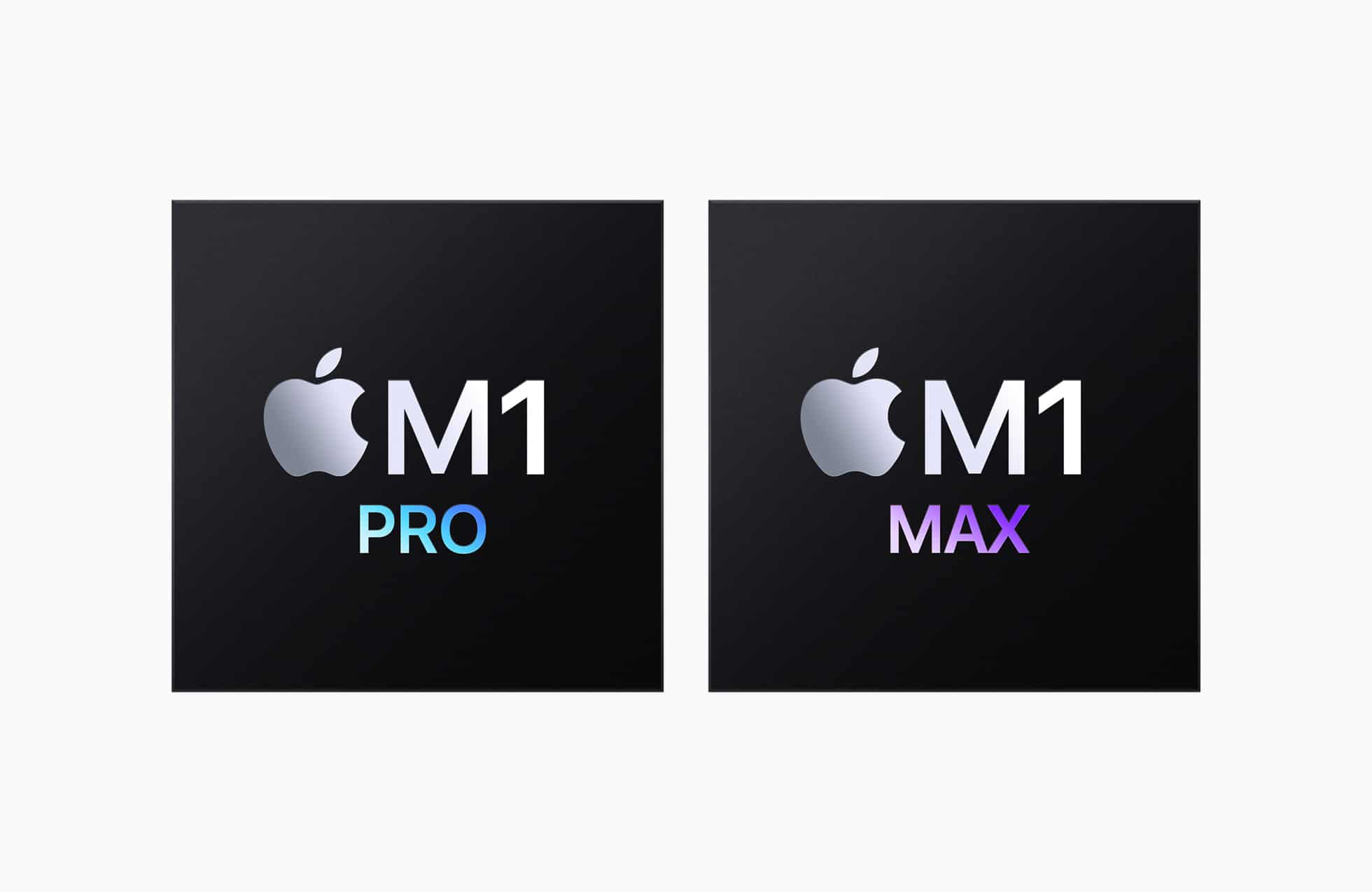Even though they are not out yet in the hands of users, Apple’s M1 Pro and M1 Max have made appearances in Geekbench and Cinebench benchmarks and show us what they feature and what are they capable of. As expected, they destroy most of the competition in terms of performance per watt usage.

The new details posted on Geekbench and Cinebench (on CPU-Monkey) show where it stands against the competition, and how it scores in these popular benchmarks. Here is what we have found so far, including what we already know.
M1 Pro and M1 Max specifications and benchmarks
M1 Pro technical specifications
- Process: 5nm
- CPU Frequency: 3.20GHz
- Cores: 10 – 8x Firestorm (high performance) + 2x Icestorm (high efficiency)
- GPU frequency: 3.20GHz
- Execution units: 2048
- Maximum Memory: Up to 32GB
- Memory type: LPDDR5-5500
- Memory Channels: 6
- Memory bandwidth: 200GB/s
- PCIe version: 4.0
- TDP: 30W
- Max TDP: 60W
- L2 cache: 28.00 MB
- FP32 performance: 5200 GFLOPS
M1 Pro Geekbench scores
- Single-core: 1768
- Multi-core: 11680
M1 Pro Cinebench R23 scores
- Single-core: 1562
- Multi-core: 14970
M1 Max technical specifications
- Process: 5nm
- CPU Frequency: 3.20GHz
- Cores: 10 – 8x Firestorm (high performance) + 2x Icestorm (high efficiency)
- GPU frequency: 3.20GHz
- Execution units: 4096
- Maximum Memory: Up to 64GB
- Memory type: LPDDR5-5500
- Memory Channels: 12
- Memory bandwidth: 400GB/s
- PCIe version: 4.0
- TDP: 30W
- Max TDP: 60W
- L2 cache: 28.00 MB
- FP32 performance: 10400 GFLOPS
M1 Max Geekbench scores
- Single-core: 1768
- Multi-core: 11968
- Metal: 68870
M1 Max Cinebench scores
- Single-core: 1562
- Multi-core: 14970
Both of these chips rank behind other Intel and AMD that run at 95W – 140W and have more cores.
In terms of where they stack against actual GPUs from Nvidia and AMD, we have some calculations from NotebookCheck They have estimated the teraflops values of the new chips as follows:
M1 8-core = 2.6 TF
M1 Pro 14-core = 4.5 TF
M1 Pro 16-core = 5.2 TF
M1 Max 24-core = 7.8 TF
M1 Max 32-core = 10.4 TF
This puts the M1 Max 32-core at the same level as a desktop Nvidia RTX 2080 and Sony PlayStation 5. Keep in mind that Apple is doing this on battery-powered devices, that provide the same performance whether plugged in or not, and also at a maximum TDP of 60W.
When we look at Apple’s own numbers, it is important to look to remember that they said that the A15 was 50 percent faster than Snapdragon 888, but it turned out to be 62 percent faster as per reviews. We expect such M1 Pro and M1 Max comparisons to come out as soon as the new MacBook Pro models are available to reviewers and consumers next week.
GXBench
New benchmarks have surfaced on GFXBench for M1 Max, as discovered by a Redditor. The numbers show that it competes against Nvidia RTX 3080 Mobile, and AMD Radeon RX 6800M. In most of these benchmarks, the M1 Max GPU outperforms its competitors.
M1 Max (at 58W)
Aztec Ruins Normal Tier (offscreen): 703.2 fps
Aztec Ruins High Tier (offscreen): 292.8 fps
Car Chase: 425.1 fps
Manhattan 3.1: 946.4 Fps
Texturing (offscreen): 57664 MTexels/s
Nvidia RTX 3080 Mobile (80-150W)
Aztec Ruins Normal Tier (offscreen): 455.1 fps
Aztec Ruins High Tier (offscreen): 220.9 fps
Car Chase: 438.9 fps
Manhattan 3.1: 528.1 fps
Texturing (offscreen): 226365 MTexels/s
AMD Radeon RX 6800M
Aztec Ruins Normal Tier (offscreen): 390.9 fps
Aztec Ruins High Tier (offscreen): 242.0 fps
Car Chase: 298.7 fps
Manhattan 3.1: 389.5 fps
Texturing (offscreen): 19196 MTexels/s
Read more:
- M1 Max vs Nvidia RTX 3080 comparison shows Apple lags in gaming benchmarks
- 16-inch M1 Max MacBook Pro is a power house, says professional photographer Austin Mann
- Apple’s M1 Max outperforms AMD Radeon Pro W6900X in Affinity GPU benchmark
- M1 Pro and M1 Max analysis reveals the new chips vastly outperform competitors

